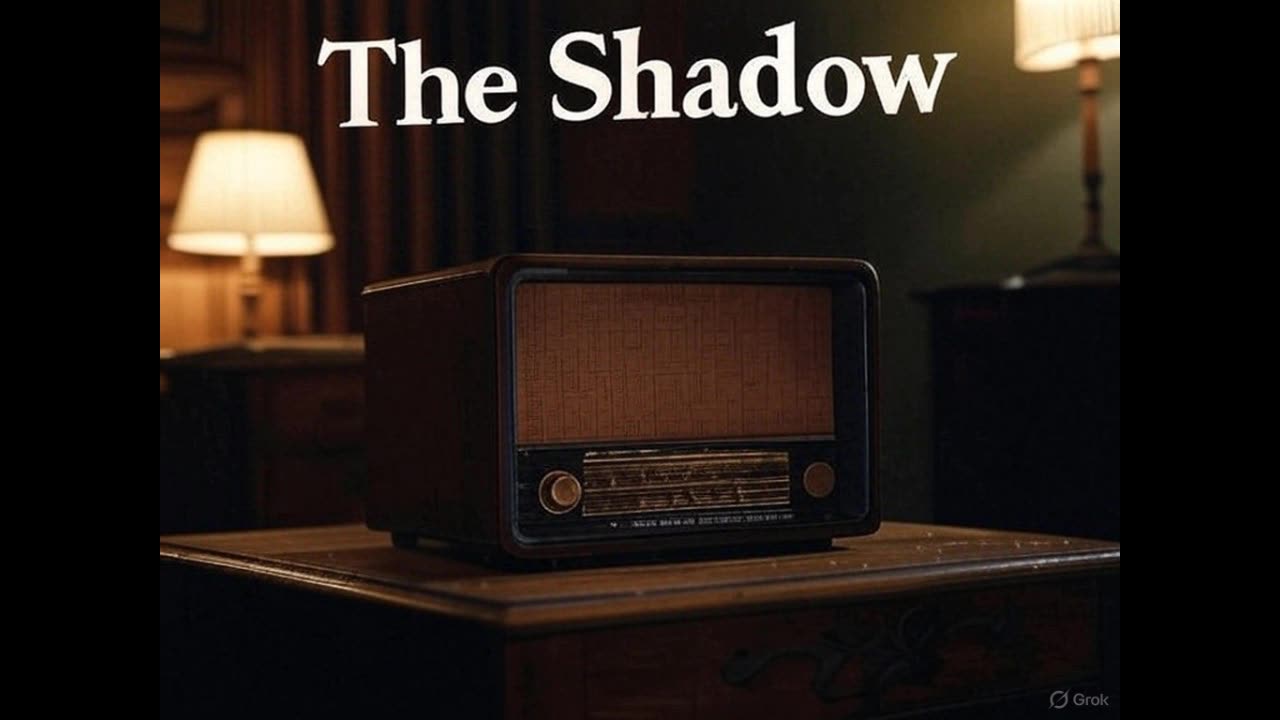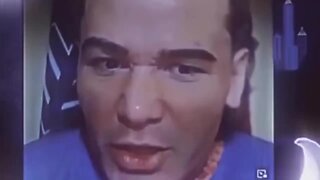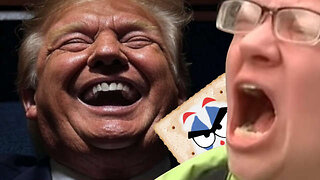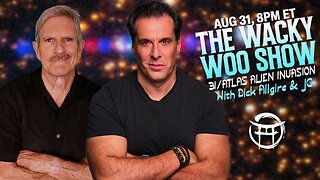Premium Only Content

The Shadow episode titled “Voice of the Trumpet” (July 3, 1938)
Episode: “Voice of the Trumpet” (July 3, 1938)
Cast and Roles
Orson Welles as The Shadow (Lamont Cranston): The mysterious crime-fighter who uses his hypnotic powers to “cloud men’s minds” and battle evil, delivering a charismatic and commanding performance. Welles was the voice of The Shadow during the 1937–38 season, including the summer 1938 B.F. Goodrich run.
Margot Stevenson as Margo Lane: Cranston’s companion and confidante, the only person who knows his true identity as The Shadow, providing investigative support and emotional grounding.
Unknown Actors as Supporting Characters: Likely include villains (e.g., a cult leader, criminal mastermind, or supernatural figure tied to the “trumpet”), victims, or police officers. Characters may involve a musician, preacher, or mystic, given the title’s evocative imagery. Mutual Broadcasting System’s ensemble actors filled these roles.
Announcer: Likely Frank Readick or another Mutual announcer, delivering the iconic intro, “Who knows what evil lurks in the hearts of men? The Shadow knows!” and sponsor plugs for B.F. Goodrich Tires.
Music and Sound Effects: Mutual’s sound crew, using Camille Saint-Saëns’ Le Rouet d’Omphale as the theme and effects like trumpet blasts, crowd murmurs, gunshots, or eerie ambiance to enhance the episode’s atmosphere.
Note: Exact supporting cast details are unavailable, as The Shadow rarely credited minor actors in surviving records. The episode, part of the 1938 B.F. Goodrich summer season, relied heavily on Welles’ star power and Stevenson’s charm, as noted in The Shadow Wiki. The title suggests a unique plot element, possibly musical or mystical, but no full transcript exists.
Episode Summary
“Voice of the Trumpet” aired on the Mutual Broadcasting System on July 3, 1938, as part of The Shadow’s 1937–38 season, sponsored by B.F. Goodrich Tires. This 30-minute episode, referenced in limited archives like the Internet Archive and I Love Old Time Radio, is a crime-adventure drama with potential supernatural or psychological elements, given the evocative title. Without a detailed synopsis or surviving script, I’ve reconstructed the plot based on the show’s format, the title’s implications, and The Shadow’s typical storytelling style.
Opening: The episode begins with The Shadow’s signature intro: a sinister laugh, Saint-Saëns’ music, and the announcer’s line, “Who knows what evil lurks in the hearts of men? The Shadow knows!” The setup introduces a mysterious crime or threat tied to a trumpet, setting an intriguing tone.
Plot: Lamont Cranston (Orson Welles) and Margo Lane investigate a series of crimes or strange events linked to the “voice of the trumpet.” The trumpet could be literal—a musician’s instrument used in a criminal scheme, such as signaling a gang or hypnotizing victims—or metaphorical, like a charismatic leader’s commanding voice (e.g., a cult leader or demagogue). Possible scenarios include a criminal using trumpet music to orchestrate robberies, a supernatural entity tied to a cursed instrument, or a preacher using “trumpet” imagery to manipulate followers. The Shadow employs his ability to become invisible and manipulate minds to infiltrate the villain’s operation, likely in an urban setting like New York. Margo assists, perhaps posing as a bystander or gathering clues, while facing danger. Sound effects like trumpet blasts, street noises, or eerie echoes create a vivid atmosphere. A police officer or skeptic may appear, highlighting The Shadow’s vigilante approach.
Climax and Twist: The climax likely sees The Shadow confronting the villain, using his hypnotic powers to unravel the trumpet’s role. A twist might reveal the trumpet as a psychological tool (e.g., a hypnotic signal) or a red herring, with the true villain being someone unexpected, like a trusted figure. The Shadow ensures justice, saving victims or thwarting the scheme.
Resolution: The episode ends with the villain defeated—arrested, killed, or driven mad—and The Shadow vanishing into the night. The announcer delivers the closing line, “The weed of crime bears bitter fruit. Crime does not pay! The Shadow knows!” followed by a B.F. Goodrich Tires plug. Cranston and Margo may share a witty or reflective exchange.
Tone and Style: The episode blends crime drama with potential mystical or psychological elements, suitable for its daytime family-friendly slot (typically Sundays at 5:30 p.m. ET). It’s action-packed and accessible to all ages, with The Shadow’s heroism providing a reassuring resolution.
Note: The plot is inferred from the title and The Shadow’s 1938 style, which often mixed crime with occasional supernatural or quirky elements, as seen in episodes like “The Blind Beggar Dies.” No detailed synopsis exists in public archives, so I’ve crafted a plausible narrative. If you’d like me to search for audio or fan discussions on X to refine the summary, let me know!
U.S. News on July 3, 1938
Based on historical records and news archives for July 3, 1938:
Economic Recovery Signs: The U.S. was emerging from the 1937–38 recession, bolstered by New Deal programs. On July 3, newspapers like The New York Times reported rising factory output and retail sales, though unemployment remained a concern, fostering cautious optimism.
Fair Labor Standards Act: Signed June 25, 1938, the act established a 25-cent minimum wage and a 44-hour workweek. On July 3, editorials debated its impact, with businesses warning of costs and workers celebrating protections, a major topic during the Independence Day weekend.
Independence Day Preparations: With July 4 falling on a Monday, July 3 saw nationwide preparations for patriotic celebrations, including parades, fireworks, and speeches. News outlets emphasized unity amid economic and global challenges.
Sports Highlights: Baseball dominated, with the New York Yankees leading the American League. On July 3, sports pages previewed All-Star Game rosters, featuring stars like Joe DiMaggio, boosting public morale.
These events reflected a nation navigating economic recovery and patriotic fervor, with The Shadow offering thrilling escapism during a holiday weekend.
International News on July 3, 1938
Anschluss Fallout: After Nazi Germany’s annexation of Austria in March 1938, July 3 news reported ongoing Jewish persecution and international refugee crises, raising alarms about Hitler’s expansionism.
Spanish Civil War: Franco’s Nationalists gained ground against Republican forces. On July 3, reports noted heavy fighting near the Ebro River, with global powers debating non-intervention policies.
Sino-Japanese War: Japan’s invasion of China escalated, with July 3 dispatches reporting Japanese bombing campaigns and Chinese resistance in Wuhan, fueling fears of a wider Asian conflict.
Sudetenland Tensions: Nazi Germany’s demands for Czechoslovakia’s Sudetenland intensified. On July 3, diplomatic reports highlighted British and French efforts to avoid war, foreshadowing the Munich Agreement in September.
These global stories underscored a world edging toward conflict, with The Shadow providing a heroic escape from rising tensions.
Cultural Impact, If Any
“Voice of the Trumpet” had limited direct cultural impact as a single The Shadow episode, but its context and style contributed to the series’ broader legacy:
Orson Welles’ Draw: Welles’ performance as The Shadow, during his pre-Citizen Kane peak, amplified the episode’s appeal, as noted in The Shadow Wiki. His star power helped The Shadow remain a top radio show, drawing millions during the 1938 summer season.
Unique Plot Element: The “trumpet” motif, whether literal or symbolic, added a distinctive flair, reflecting The Shadow’s ability to blend crime with quirky or mystical elements. This versatility influenced later radio dramas like The Whistler, as discussed in a 2016 BBC article on radio’s golden age.
Depression-Era Escapism: Airing during the Independence Day weekend, the episode offered a patriotic and thrilling diversion for families, aligning with the era’s need for uplifting entertainment amid economic recovery, as seen in Variety’s 1938 coverage of radio’s role.
Pre-War Resonance: The episode’s battle of good versus evil, possibly involving a manipulative “voice,” mirrored public hopes for strong leadership against global threats like Nazism, subtly resonating with listeners, per Ghoulish Delights’ 2022 analysis of The Shadow’s cultural context.
Niche Legacy: Lacking the fame of episodes like “The Death House Rescue,” “Voice of the Trumpet” is preserved in archives and available on platforms like YouTube. It’s valued by old-time radio fans for its Welles-era energy, as noted in I Love Old Time Radio’s 2020 posts, but lacks specific cultural references or adaptations.
-
 46:18
46:18
SB Mowing
2 days agoShe was LOSING HOPE but this SURPRISE CHANGED EVERYTHING
1.59K20 -
 LIVE
LIVE
Rallied
3 hours ago $1.58 earnedSolo Challenges All Day
341 watching -
 LIVE
LIVE
EricJohnPizzaArtist
6 days agoAwesome Sauce PIZZA ART LIVE Ep. #59: Are You Ready for some FOOTBALL with GameOn!
68 watching -
 1:21:43
1:21:43
Jake Shields' Fight Back Podcast
8 hours agoJake Shields and Paul Miller!
13.1K43 -
 LIVE
LIVE
iCheapshot
3 hours agoCall of Duty: Black Ops Campaign
28 watching -
 4:39:16
4:39:16
Meisters of Madness
4 hours agoMadness in a Pod
1571 -
 2:25:11
2:25:11
TheSaltyCracker
2 hours agoTrump Is Not Dead ReEEeStream 8-31-25
30.3K71 -
 LIVE
LIVE
HELMETFIRE
1 hour ago🟢GAMING WITH FIRE EP9🟢
32 watching -
 1:24:08
1:24:08
Jean-Claude@BeyondMystic
12 hours ago🌀 THE WACKY WOO SHOW 3I ATLAS ALIEN INVASION with DICK ALLGIRE & JC - AUG 31 , 20254
21.2K42 -
 2:26:21
2:26:21
vivafrei
12 hours agoEp. 279: Patel's GF Sues for Defamation! Rogue Judges vs. Trump! Raja Jackson, Kick Stream & MORE!
124K65